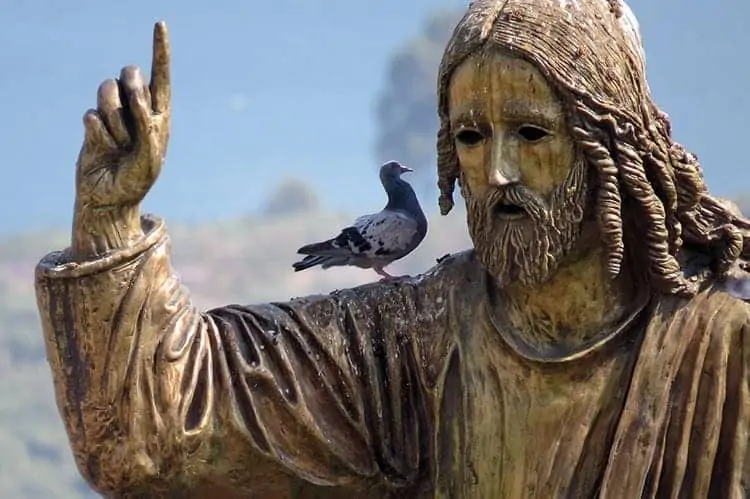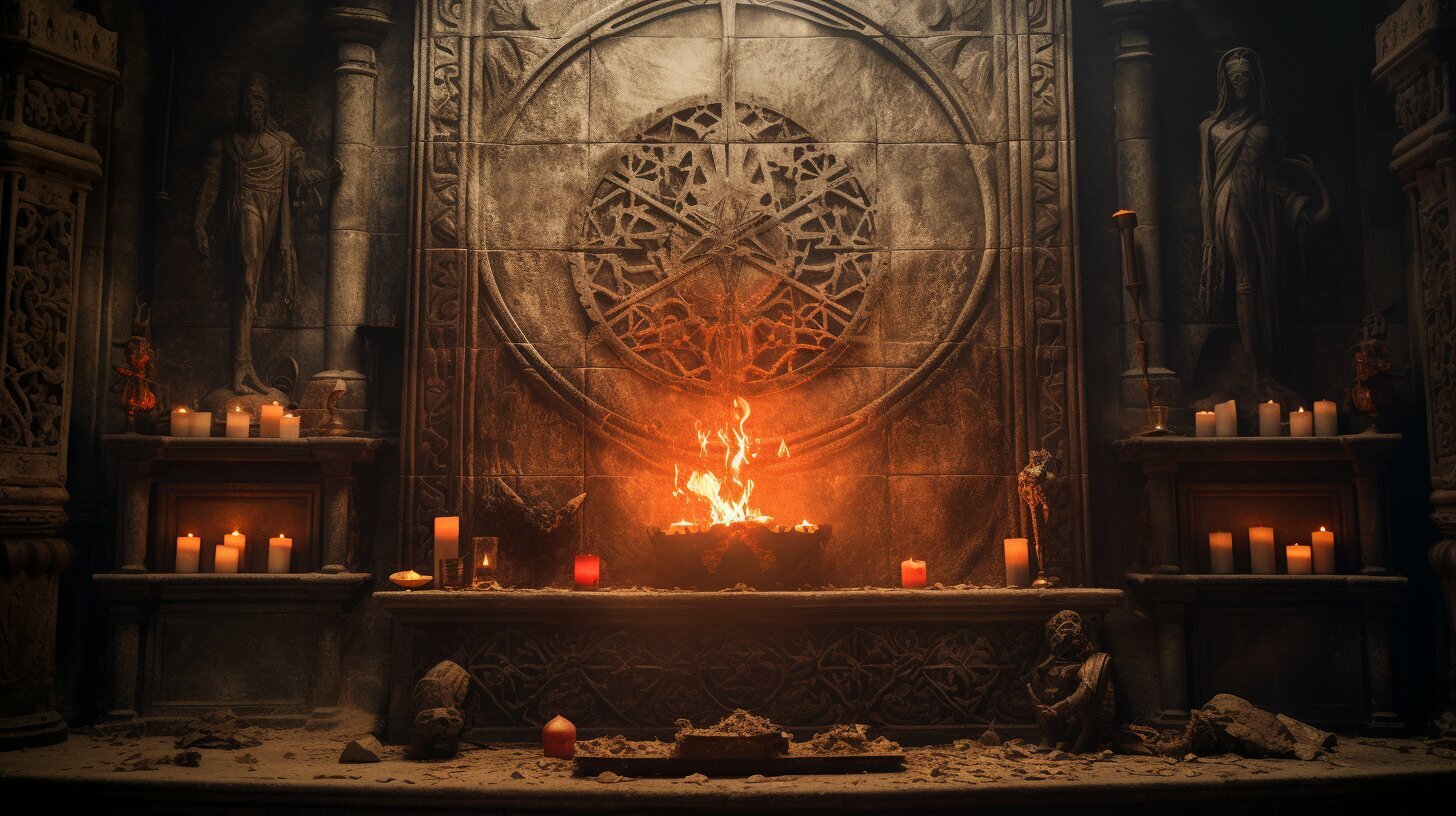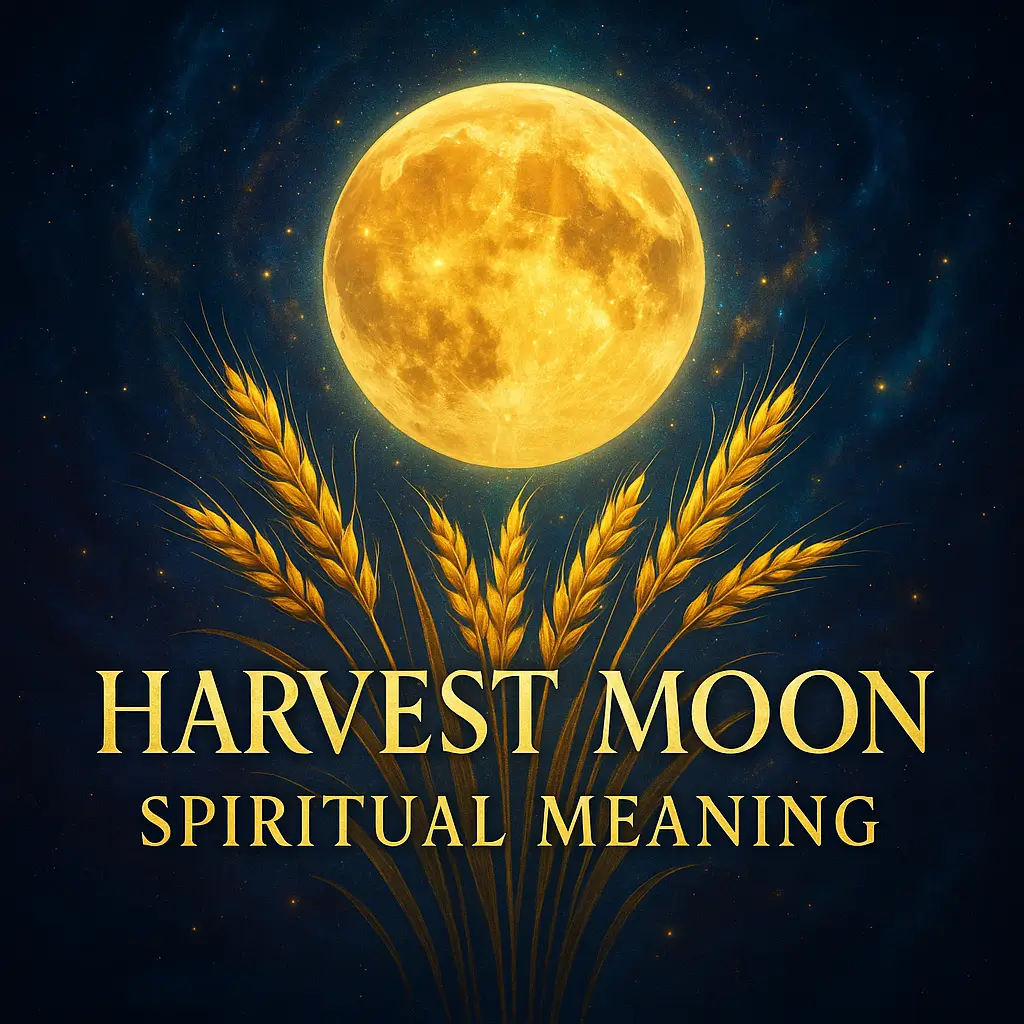Table of Contents
- 1 Key Takeaways
- 2 Historical Context of Sacrifice
- 3 Religious Symbolism of Sacrifice
- 4 Symbolism for Sacrifice in Art and Media
- 5 The Significance of Symbolism for Sacrifice
- 6 Visual Representations and Symbolic Elements of Sacrifice
- 7 Conclusion
- 8 Source Links
- 9 FAQ
- 9.1 What are universal symbols of sacrifice across cultures?
- 9.2 Why is red commonly associated with sacrifice?
- 9.3 What is the significance of the sacrifice rune?
- 9.4 How do animals symbolize sacrifice in different traditions?
- 9.5 What names across cultures mean sacrifice?
- 9.6 How are symbols of sacrifice used in modern storytelling?
- 9.7 What objects commonly symbolize sacrifice in religious traditions?
Key Takeaways
- Symbolism for sacrifice transcends cultural boundaries, appearing in religions, literature, and art forms worldwide to represent profound acts of selflessness.
- Sacrifice symbols like the cross, altar, and ceremonial objects serve as powerful visual representations of devotion and connection to the divine.
- In nature and society, sacrifice is represented through various symbolic actions such as the emperor penguin’s devotion to its offspring in harsh conditions.
- The dual nature of sacrifice explores both the loss of something valuable and the greater purpose or transformation that results from that offering.
- Understanding sacrifice symbolism enhances storytelling by adding emotional depth and creating narratives that resonate more deeply with audiences.
Symbolism for sacrifice is a powerful tool used in various cultures and religions to convey profound meanings and explore the act of giving up something valuable for a greater cause. It involves using specific symbols and motifs to reinforce the central message of a story, showcasing the significance of sacrifice in human existence.
Sacrifice can be represented by objects or actions that demonstrate the willingness to give up something cherished for the betterment of others or a higher purpose. This act of selflessness is often seen as a form of devotion and a way to establish a connection with the divine.
Across different religions and spiritual traditions, sacrifice is considered a sacred rite, deeply rooted in worship. It is a means to offer an object or a life to a deity as a sign of reverence, gratitude, or seeking blessings. By sacrificing something valuable, individuals aim to establish a right relationship with the sacred and acknowledge the divine nature of life itself.
Symbols associated with sacrifice can be found in various aspects of nature and society. For instance, the male emperor penguin’s unwavering commitment to caring for its egg amidst harsh conditions symbolizes sacrifice and devotion. Similarly, the cross or an altar in religious settings represents the sacrificial act and its significance in spiritual practice.
Symbolism for sacrifice extends beyond religious rituals and can be found in literature, films, and other art forms. In these mediums, symbols related to sacrifice are used to convey powerful themes such as courage, loyalty, or brotherhood. They allow storytellers to explore the emotional depths of characters and create a deeper impact on the audience.
Historical Context of Sacrifice
Sacrifice has played a significant role in various cultures throughout history, with symbolic representations of this act reflecting the spiritual and societal values of different civilizations. From ancient civilizations to modern times, the concept of sacrifice has been deeply ingrained in our collective consciousness. Whether it is the sacrificial rituals of the Aztecs or the symbolic offerings in Hinduism, the act of sacrifice has been used as a means to establish a connection with the divine.
In ancient Egypt, for example, sacrifice was an integral part of religious ceremonies, with offerings made to appease the gods and ensure their favor. In Greek mythology, sacrifice was seen as a means to honor the gods and seek their protection. The image of an animal being offered on an altar was a common motif in ancient Greek art, symbolizing the act of giving up something precious for a higher purpose.
Similarly, in Christianity, the crucifixion of Jesus Christ is seen as the ultimate sacrifice, a selfless act of love and redemption. The symbol of the cross is deeply ingrained in Christian symbolism, representing sacrifice, salvation, and the triumph of good over evil. This symbol has been depicted in numerous artworks, serving as a powerful reminder of the sacrifice made for humanity.

Sacrifice in Symbolic Language
The symbolic representation of sacrifice goes beyond religious rituals and art. It is also prevalent in literature, films, and other forms of media. In these creative mediums, symbolism for sacrifice is used to convey deeper themes and evoke emotional responses. The sacrifice of a hero in a novel or the selfless act of a character in a movie can serve as a powerful symbol of courage, loyalty, or brotherhood.
For instance, in J.R.R. Tolkien’s “The Lord of the Rings,” the character of Frodo Baggins embarks on a perilous journey to destroy the One Ring, knowing that he may have to sacrifice his own life in the process. This act of sacrifice symbolizes his unwavering determination and his willingness to give up everything for the greater good.
| Symbolism of Sacrifice in Different Cultures | Symbol | Meaning |
|---|---|---|
| Aztec Civilization | Heart | Sacrifice of a human heart to the gods to ensure the continued existence of the universe |
| Hinduism | Flowers, fruits, and incense | Offerings made to deities to seek their blessings and establish a connection with the divine |
| Ancient Egyptian Religion | Animal sacrifices | Offerings made to appease the gods and ensure their favor |
The use of symbolism for sacrifice allows storytellers to delve into the complexities of human experiences and explore themes of selflessness, redemption, and the search for meaning. By understanding and effectively utilizing these symbols, writers and filmmakers can enhance the storytelling experience and create narratives that resonate deeply with audiences.
Religious Symbolism of Sacrifice
Within religious contexts, symbolism for sacrifice takes on profound meanings, representing acts of devotion, surrender, and transcendence. Throughout different religious traditions, sacrifice is seen as a sacred act that establishes a connection with the divine. It goes beyond the mere physical act of offering and encompasses a spiritual significance that carries deep symbolism.
In the realm of religious symbolism, sacrifice often represents acts of devotion, demonstrating a profound commitment to one’s faith. It can symbolize the willingness to give up something valuable or significant as a demonstration of dedication and love towards a higher power. This act of surrendering echoes the belief in sacrificing personal desires or material possessions for the greater good and the transcendent nature of the divine.
Sacrifice in symbolic language within religious practices can also be seen as a transformative act, symbolizing the journey of the individual towards spiritual enlightenment or rebirth. It represents the shedding of ego and attachment, allowing for a deeper connection with the divine realms. Through sacrifice, individuals seek to transcend their earthly limitations and reach a higher state of consciousness or union with the divine.
Symbolism of self-sacrifice is particularly prevalent within religious contexts, illustrating the ultimate act of devotion and selflessness. It embodies the idea of sacrificing oneself for the sake of others or for a greater purpose, reflecting the deeply ingrained values of compassion, love, and service. This symbolism serves as a powerful reminder of the potential for personal transformation and the transformative power of sacrifice within religious beliefs.
Understanding and embracing the religious symbolism of sacrifice enhances the spiritual experience and deepens one’s connection to the divine. It allows individuals to engage in rituals and practices that hold profound meaning and significance, fostering a sense of devotion, surrender, and transcendence. Through these symbols, religious communities are able to communicate and express their beliefs and values, ultimately enriching their spiritual journey.
| Religious Symbolism of Sacrifice | Meanings |
|---|---|
| Devotion | Acts of profound commitment to one’s faith |
| Surrender | Willingness to give up something valuable for a higher purpose |
| Transcendence | Journey towards spiritual enlightenment and union with the divine |
| Selflessness | Acts of sacrificing oneself for the greater good |
Symbolism for Sacrifice in Art and Media
In the realm of art and media, symbolism for sacrifice is often employed to convey profound themes such as courage, loyalty, and the bonds of brotherhood. Through the use of symbolic imagery and storytelling techniques, artists and filmmakers bring to life the dual nature of sacrifice, exploring its complex meanings and implications.
Symbolic sacrificial rituals, depicted in various forms of art, serve as powerful metaphors for the human experience. They represent the willingness to give up something valuable or significant for the sake of a higher purpose or noble cause. Through symbols like altars, crosses, or ceremonial objects, artists evoke emotions and inspire reflection on the depth of sacrifice.
Furthermore, symbolism for sacrifice can be found in mythology, where ancient tales often use sacrificial acts as a means of expressing profound truths about human existence. These myths shed light on the inner struggles, virtues, and personal journeys of characters who willingly make sacrifices. From the selfless act of Prometheus stealing fire for humanity to the bravery of King Arthur and his knights, these stories explore the complexities of sacrifice and its transformative power.
Modern interpretations embrace symbolism for sacrifice
In modern literature and movies, symbolism for sacrifice continues to captivate audiences and ignite contemplation. From classic novels like “Les Misérables” to contemporary films like “The Dark Knight,” sacrifice is portrayed as a catalyst for growth, redemption, and the triumph of good over evil. Through symbols and motifs, these works convey the eternal struggle between self-interest and selflessness, emphasizing the importance of sacrifice as a means of personal and societal transformation.
Indeed, understanding and effectively utilizing symbolism for sacrifice can elevate the storytelling experience, allowing readers and viewers to connect with the characters on a deeper level. By exploring the dual nature of sacrifice, artists and filmmakers enable audiences to reflect on their own values, choices, and the profound impact that sacrifice can have in shaping their lives and the world around them.
Table: Symbolism for Sacrifice in Art and Media
| Symbol | Meaning |
|---|---|
| Altar | Representation of the sacred and the act of offering |
| Cross | Symbol of self-sacrifice and redemption |
| Ceremonial objects | Significance of rituals and the transformative power of sacrifice |
| Mythological characters | Exploration of the virtues and personal journeys associated with sacrifice |
The Significance of Symbolism for Sacrifice
The use of symbolism for sacrifice has the power to enhance storytelling, evoke emotions, and deepen the reader’s understanding of the central themes of sacrifice. By employing specific symbols and motifs, authors and filmmakers can reinforce the message of sacrifice in a compelling and thought-provoking manner. Sacrifice, as a concept, involves giving up something valuable for a greater good. When represented through symbolic objects or actions, it becomes a powerful tool to engage the audience and create a lasting impact.
Symbolism for sacrifice is not limited to any particular culture or religion; it is a universal language that resonates with people from all walks of life. In various forms of worship around the world, sacrifice is a core religious rite. It serves as a means to establish a connection with the divine and showcases the human desire to acknowledge and honor the sacred. The act of sacrifice itself is a celebration of life and a recognition of its divine essence. While the offering may often be destroyed, it is the act of offering that holds the true meaning of sacrifice.
Nature and society are rich sources of symbols associated with sacrifice. In nature, the image of a male emperor penguin carefully tending to its egg symbolizes the sacrifice of personal comfort for the well-being of the next generation. In society, religious symbols like the cross or an altar represent sacrifice and are used to deepen the spiritual experience. These symbols can be used by authors and artists to foreshadow events, evoke empathy, or depict a character’s emotional journey. From literature to movies, symbolism for sacrifice can convey themes of courage, loyalty, and brotherhood, inviting readers and viewers to reflect on the deeper meanings of sacrifice.
Understanding and effectively using symbolism for sacrifice enhances the storytelling experience. It allows readers and viewers to connect with the characters on a deeper level, invoking empathy and evoking emotions. By providing a visual language that transcends cultural barriers, symbolism for sacrifice becomes a conduit for exploring universal themes and values. Whether it is a sacrificial act in a mythical tale or a character’s self-sacrifice in a contemporary novel, the use of symbolism adds layers of depth and complexity, enriching the narrative and leaving a lasting impression on the audience.
Visual Representations and Symbolic Elements of Sacrifice
The symbol of self sacrifice manifests itself through various visual elements that have been recognized across different cultures and time periods. These powerful representations help convey the profound meaning behind the act of giving something valuable for a greater cause. Understanding these symbols of sacrifice enriches our appreciation of their significance in storytelling, religious practices, and cultural traditions.
Colors and Visual Elements That Represent Sacrifice
Red sacrifice symbolism is perhaps the most universal visual representation, as the color red often symbolizes blood, which is intrinsically connected to the concept of life force and vital energy. When we consider what color represents sacrifice, red stands prominent as it evokes the physical aspect of offerings throughout history. However, other colors also carry sacrificial connotations – white can represent purity of intention, while black may symbolize the solemnity and gravity of the sacrificial act.
Sacrifice drawings and artistic depictions often incorporate specific visual elements that immediately convey the concept of offering something valuable. These representations frequently feature hands extended in offering, flames consuming a gift, or a figure in a posture of surrender. Artists throughout history have created things that symbolize sacrifice through their work, using visual shorthand that transcends language barriers to communicate profound emotional and spiritual concepts.
Ancient Symbols and Their Meanings
The sacrifice rune, known as “Gebo” in the Elder Futhark runic alphabet, represents gift-giving, generosity, and the sacred exchange between humans and deities. This ancient symbol for sacrifice reminds us that sacrifice isn’t merely about loss but about sacred reciprocity—giving to receive, often on a spiritual level. Similarly, the brand of sacrifice meaning in various esoteric traditions relates to permanent marks or symbols that represent a lifelong commitment or dedication to a cause greater than oneself.
Throughout different cultures, specific sacrifice symbols have emerged that instantly communicate the concept of offering. The altar, the chalice, the bundle of wheat, and the surrendered crown all serve as powerful symbols for sacrifice that storytellers and artists can incorporate to deepen the emotional resonance of their work. These symbols often appear in religious iconography, literature, and even modern media to represent moments of profound giving.
| Symbol | Cultural Origin | What It Symbolizes |
|---|---|---|
| Pelican piercing its breast | Medieval Christianity | Ultimate parental sacrifice |
| Phoenix | Multiple cultures | Self-sacrifice for renewal |
| Broken sword | Various warrior cultures | Sacrifice of power or warfare |
| Empty hands | Universal | Complete surrender and offering |
In many traditions, what name means sacrifice is an important consideration when naming children or bestowing titles. Names like Isaac (meaning “he will laugh” but associated with Abraham’s willingness to sacrifice), Isidore (meaning “gift of Isis”), and Kurban (directly meaning “sacrifice” in several languages) carry the weight of this profound concept, connecting individuals to the timeless tradition of meaningful offering.
These visual and symbolic elements of sacrifice continue to evolve in contemporary storytelling while maintaining their power to evoke emotional responses. Whether through traditional sacrifice symbols or modern interpretations, these representations help us understand and connect with the profound human experience of giving something valuable for a purpose beyond ourselves.
Conclusion
Symbolism for sacrifice is a universal language that transcends cultures and religions, allowing us to explore the profound act of selflessness and its broader significance. By using specific symbols and motifs, we can reinforce the central message of a story, highlighting the importance of sacrifice as a means of giving up something valuable for a greater good.
Sacrifice is deeply rooted in various forms of religious worship around the world. It is a sacred rite that involves offering an object to a divinity, establishing a right relationship with the sacred. This act of sacrifice is not just about the destruction of the offering; it encompasses the entire act of offering itself.
The symbols associated with sacrifice can be found in nature, such as the male emperor penguin caring for its egg, or in society, such as a cross or an altar. These symbols serve as foreshadowing devices, allowing us to anticipate events or illustrating the emotional plight of characters. In literature and movies, symbolism for sacrifice is often used to convey themes of courage, loyalty, or brotherhood, enhancing the overall storytelling experience for readers and viewers alike.
Understanding and effectively utilizing symbolism for sacrifice is essential for storytellers, as it can bring depth and richness to narratives. By tapping into this universal language, we can explore and appreciate the profound act of selflessness and its broader significance in our lives and the world around us.
Source Links
- https://writershelpingwriters.net/2010/11/symbolism-thesaurus-entry-sacrifice/
- https://onestopforwriters.com/symbolisms/sacrifice
- https://www.britannica.com/topic/sacrifice-religion
FAQ
What are universal symbols of sacrifice across cultures?
Universal symbols include the altar (representing the sacred space for offerings), the phoenix (symbolizing rebirth through sacrifice), and outstretched hands (depicting the act of giving). These transcend cultural boundaries and appear in religious iconography, literature, and art worldwide as powerful representations of selfless giving.
Why is red commonly associated with sacrifice?
Red symbolizes blood, which represents life force in virtually all cultures. As sacrifice often involved blood offerings historically, this color became intrinsically linked to sacrificial acts. Red conveys both the physical cost of sacrifice and the passionate dedication behind meaningful offerings.
What is the significance of the sacrifice rune?
The sacrifice rune “Gebo” (ᚷ) in Elder Futhark represents the principle of giving to receive. It symbolizes sacred exchange, generosity, and balance in relationships with others and deities. This ancient symbol reminds us that sacrifice involves reciprocity rather than mere loss.
How do animals symbolize sacrifice in different traditions?
The pelican piercing its breast to feed young represents parental sacrifice in Christianity. Emperor penguins enduring harsh conditions for offspring symbolize devotion. The lamb represents innocence and purity of sacrifice, while the ox symbolizes strength surrendered in service to others.
What names across cultures mean sacrifice?
Names that embody sacrifice include Kurban (Arabic/Turkish: “offering”), Isaac (Hebrew: connected to Abraham’s willingness to sacrifice), Isidore (Greek: “gift of Isis”), and Thysia (Greek: “sacrifice”). These names honor the concept of meaningful offering and selfless dedication.
How are symbols of sacrifice used in modern storytelling?
Modern storytellers use sacrifice symbolism through visual motifs like the hero’s surrendered weapon, abandonment of personal goals, or physical transformation. These symbols create emotional depth in narratives, helping audiences connect with characters’ journeys and making pivotal moments more impactful.
What objects commonly symbolize sacrifice in religious traditions?
Common objects include the chalice (representing offering of life essence), ceremonial knives (tools of transformation), incense (symbolizing prayers rising to deities), and broken crowns (signifying surrender of power or status). These tangible symbols help believers connect with abstract spiritual concepts of devotion.



